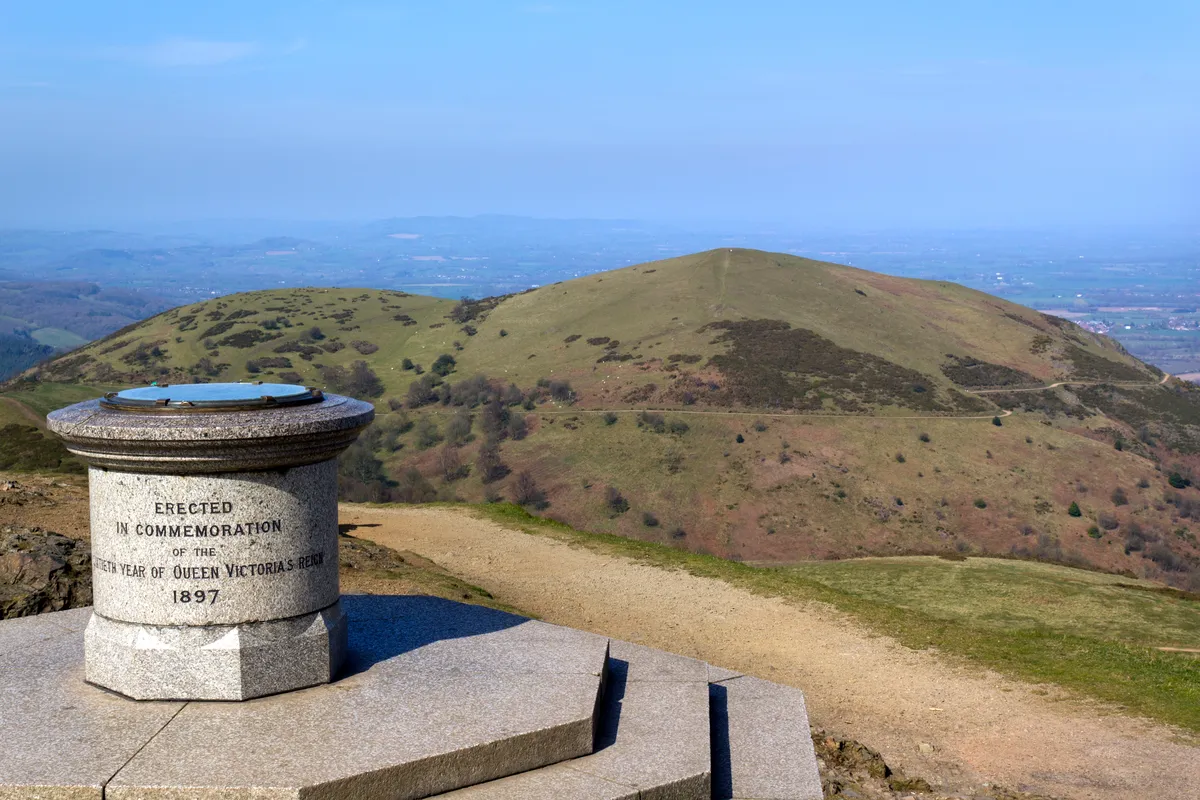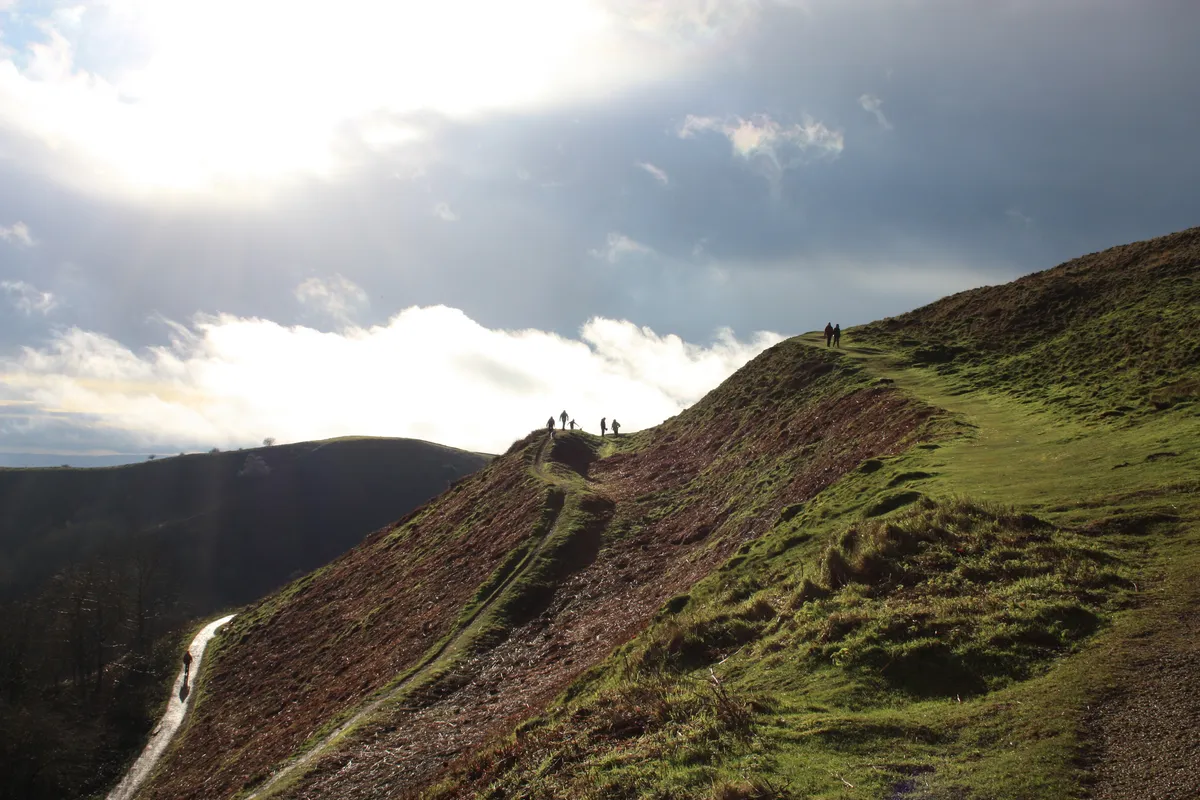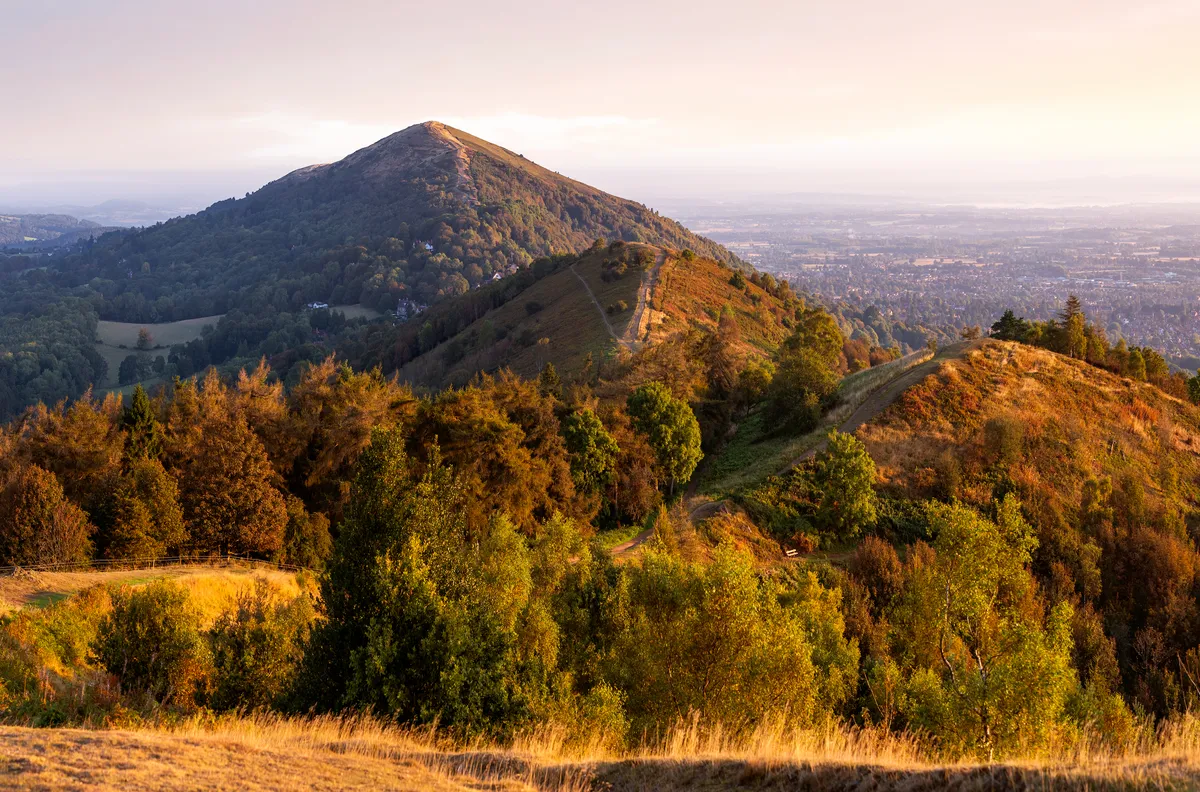The glorious Malvern Hills rise up from the flatlands, offering magnificent walking terrain and panoramic views across the Severn Valley into 12 English and Welsh counties. The hills form a natural, eight-mile boundary between Worcestershire, Herefordshire and a small part of northern Gloucestershire. For walkers, Malvern offers both quiet ambles along low wooded slopes and strenuous ‘end to end’ hill walking along the entire ridge, which makes them suitable for all abilities.
Malvern itself is a former spa town and the hills are fêted for their mineral water – take a bottle to fill from springs and spouts as you wander. A popular destination among walkers, there is a huge variety of places to stay, from luxury hotels with stunning views tucked into the side of the hills, to budget youth hostels in the centre of the town. A diverse range of pubs, restaurants and independent shops make this a wonderful location for a short break in the UK.
Discover all there is to know about this fascinating part of southern England with our guide to the Malvern Hills and surrounding area, including the best walks and things to do, places to stay and eat, and great literary links.
Where are the Malvern Hills?
The Malvern Hills sit roughly halfway between the cities of Birmingham and Bristol. The 12-mile ridge-line falls within three English counties: Worcestershire, Herefordshire and a small part of northern Gloucestershire.
The Malvern Hills are roughly a 30-60 minute drive from the centre of the Cotswolds, and almost three hours from London.
How high are the Malvern Hills?
The highest point on the Malvern Hills is Worcestershire Beacon, which rises 425m above sea level. Here you’ll find a toposcope, installed in 1897 to commemorate Queen Victoria’s diamond jubilee.

Walking routes in the Malverns
There are lots of paths around and across the ridge that make spontaneous walks easy. However, if you like to plan your route and mileage, here are two suggestions:
Explore British Camp
A beautifully built, multi-banked hillfort that contours around the Herefordshire Beacon at the southern end of the rolling Malvern Hills. Built in the 2nd-century BC, its scale is awesome, enclosing an area of 44 acres. It was later topped by a Norman motte-and-bailey castle mound known as The Citadel. 17th-century diarist John Evelyn called the view from the hill “one of the godliest vistas in England”.

Walk along the ridge into town
Start at British Camp before descending into the picturesque town of Great Malvern for a well-earned pub meal.
Visit the Malvern Hills GeoCentre
Malvern Hills GeoCentre is the visitor centre for the GeoPark Way, a 175km (109-mile) walk from Bridgnorth to Gloucester, passing geological and natural landscape features. Here you can pick up maps and trail leaflets, or borrow a guide detailing a loop around the Worcestershire Beacon that takes up to one and a half hours. geocentre.co.uk

Explore Malvern town
Great Malvern Priory
Fine church founded in 1085, with medieval stained glass, tiles and carved misericords. Church Street, Malvern WR142AY. greatmalvernpriory.org.uk

Wander around Croome Park
Croome Court is a good place to begin a tour of Worcestershire. This parkland and neo-Palladian mansion was Lancelot ‘Capability’ Brown’s first landscape commission and major architectural project. It’s a blissful feeling when you round the National Trust footpath at the top of Church Hill and catch your first golden glimpse of the estate rolling out beneath you. A mid-autumn stroll brings further sensory joys: the lakeside swamp cypress ablaze in seasonal orange; horse chestnuts and fungi amid crunchy leaf litter. nationaltrust.org.uk/croome
View route description and mapLocal lore says this region influenced CS Lewis’ descriptions of Narnia, especially the Victorian gas lamps of Malvern. This spa town by the Malvern Hills is packed with great restaurants, cosy hotels and pubs, independent boutiques and a host of fantastic bookshops. The view's not bad either.
Discover Worcester town
Elgar remembered in Worcester, the county town by the Severn that saw the final battle of the English Civil War – The first major skirmish was nearby, at Powick Bridge. Learn more at The Commandery, a museum housed in a half-timbered Tudor building that was Charles II’s headquarters for a time; museumsworcestershire.org.uk/museums/the-commandery.

Learn about Worcester Cathedral
Worcester Cathedral has an Elgar window in its north aisle, depicting a scene from The Dream of Gerontius in stained glass. It’s an astonishing cathedral, with architectural styles spanning its 900-year existence. “Never Eat Danish Pastry” is the mnemonic given by tour guide Ian Clargo to describe its Gothic features: Norman, Early English, Decorated and Perpendicular (worcestercathedral.co.uk).
The cathedral has regal celebrity. King John’s marble tomb is in the quire; his effigy from 1232 is considered not only a likeness (monarchs’ tombs are often flattering) but the oldest royal effigy in the country. Near the high altar is a grandiose raised chantry forthe‘forgottenprince’, Arthur, HenryVII’s eldest son, who died in Ludlow in 1502, aged 15. The chapel’s exterior is adorned with heraldic Tudor rose carvings symbolising the union of the houses of York and Lancaster.
Ride the Severn Valley Railway
North-west of Worcester lie the Abberley Hills. A popular way to see the landscape east of the river is from vintage carriage windows on the Severn Valley Railway (svr.co.uk), a heritage service rumbling for 25 kilometres between Kidderminster, the Worcestershire town famed for carpets, and Bridgnorth in Shropshire. A ‘Freedom of the Line’ ticket allows unlimited stops on your day of travel. Step out at Bewdley to enjoy a riverside Georgian town, or Arley where an autumn walk through the arboretum rewards you with the burnished reds and golds of Japanese maples (arleyarboretum. co.uk). It’s a moment of wonder when the train winds through West Midlands Safari Park (wmsp.co.uk), treating passengers to the sight of grazing elephants and rhinos.
You may also like:
- Best hill walks in Britain
- British hillforts guide: history and best places to visit
- Best towns and villages to visit this winter
Experience Clive’s Fruit Farm in Upton-upon-Severn
Drop into George Marshall Medical Museum in Worcester
Lea & Perrins (of Worcestershire Sauce fame) were originally apothecarists. On the site of Worcestershire Royal Hospital is this small, fascinating musuem, conveying 250 years of medical history through mainly local artefacts. Free entry; open Monday to Friday. 01905 760 738, medicalmuseum.org.uk/georgemarshallmuseum
Places to eat and drink in Malvern
MugHouse, Claines
Set in St John’s pretty churchyard, the 700-year-old Mug House is one of perhaps only two pubs in England on consecrated ground. Enjoy good beer and hearty home-cooked food under cosy beams.
01905 456 649, themug.co.uk
Nag's Head, Malvern
Try the charmingly eccentric Nag’s Head for hand-pulled cider and a delicious Sunday lunch.
Bluebird Tearooms
Classic café with cream teas and sandwiches at the end of the walk. 9 Church Street, Great Malvern WR14 2AA.
01684 561166, bluebirdtearoomsmalvern.co.uk
Cottage in the Wood
Come here for an AA-starred meal with a view. It's around a 20 minute walk from town, and you can access the hilltop directly via a wooded path leading up from the hotel – the breakfasts are excellent.
01684 588 860, Cottage in the Wood
Red Lion Inn
This tucked-away pub offers an authentic taste of Thailand, as the South-East Asian landlady runs the kitchen.
01684 438387, 4 St Ann's Rd, WR14 4RG.
Peppe's Italian
Shore up your carbs ready for your next day's walk at this good quality family-owned Italian restaurant.
01684 578288, peppesmalvern.co.uk
Places to stay
The Cottage in the Wood, Malvern Wells
Set high amid trees on the eastern flank of the Malvern Hills, The Cottage in the Wood has unforgettable views over the Cotswolds, Vale of Evesham and the Severn Valley. Comfortable, individually styled bedrooms, luxury natural toiletries and personal touches, such as a record player in your room, make this a wonderful secluded bolthole to kick back and enjoy the view. Doubles from £210.
01684 588 860, Cottage in the Wood.
Elgar and the Malvern Hills
We’re in Edward Elgar country here, too. The composer was born in Lower Broadheath (you can visit his birthplace cottage, The Firs) and spent his final years in Marl Bank, a grand Worcester residence. He is buried with his wife Caroline Alice in the tucked-away churchyard of St Wulfstan’s.
Of this resting place, Elgar wrote of the “illimitable plain, with all the hills and churches in the distance which were [Caroline Alice’s] from childhood... inscrutable and unchanging”. Patriotic associations aside, it’s easy to see why people credit Elgar’s surroundings – through which he loved to cycle – with inspiring the intrinsic richness of his music.
How to get to the Malvern Hills
Great Malvern is eight miles southwest of Worcester and an hour’s drive from Birmingham. The station, half a mile east of the start of the walk, is served by regular trains from Hereford, Worcester and Birmingham New Street. There are also frequent buses from Worcester.
Which map do I need for the Malvern Hills?
OS Explorer 190
Grid ref: SO 77537 45954
More information on the Malvern Hills
Malvern Hills AONB
Malvern Tourist Information Centre
21 Church Street, Great Malvern WR14 2AA 01684 892289, visitthemalverns.org

